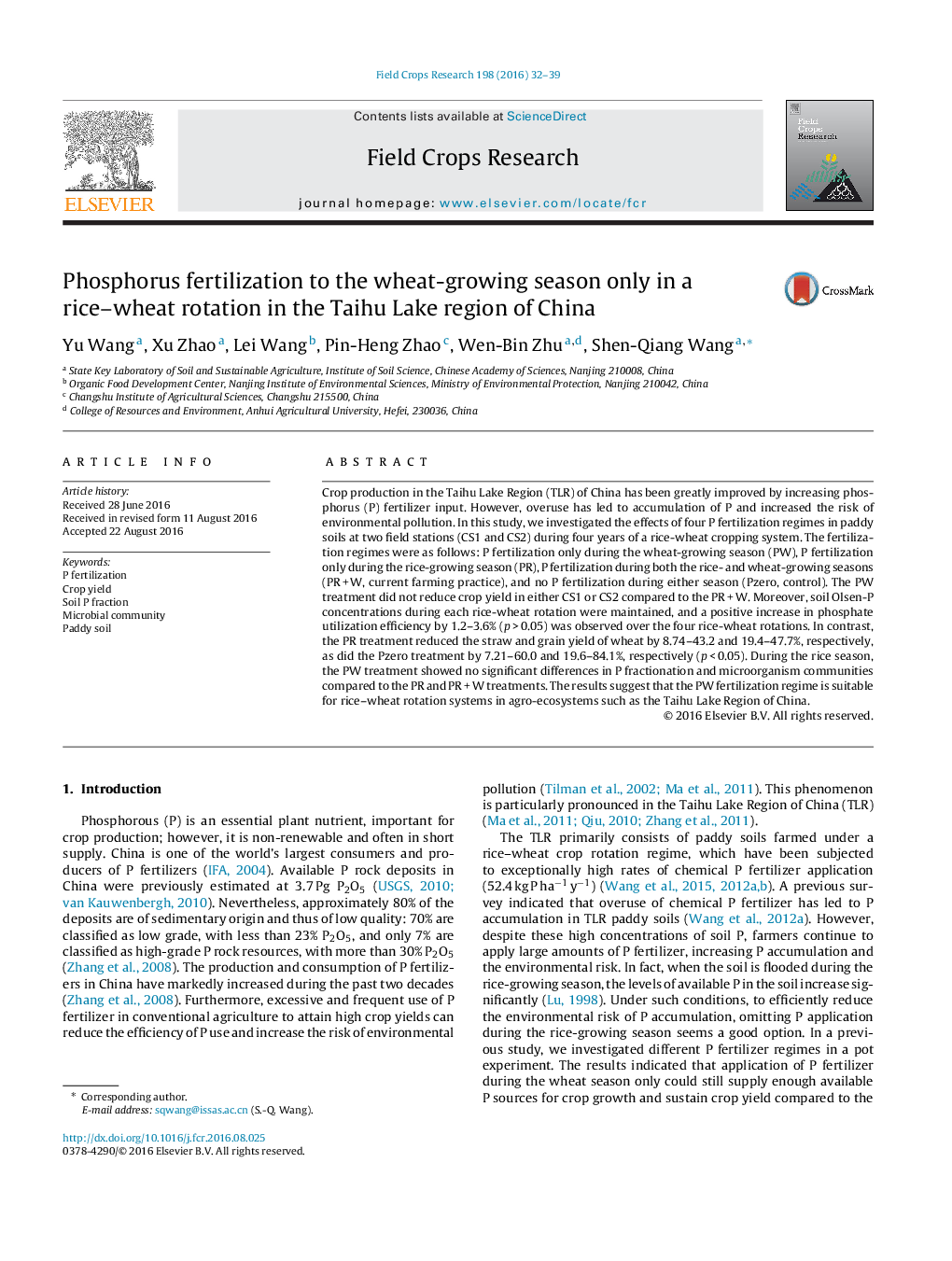| Article ID | Journal | Published Year | Pages | File Type |
|---|---|---|---|---|
| 6374383 | Field Crops Research | 2016 | 8 Pages |
Abstract
Crop production in the Taihu Lake Region (TLR) of China has been greatly improved by increasing phosphorus (P) fertilizer input. However, overuse has led to accumulation of P and increased the risk of environmental pollution. In this study, we investigated the effects of four P fertilization regimes in paddy soils at two field stations (CS1 and CS2) during four years of a rice-wheat cropping system. The fertilization regimes were as follows: P fertilization only during the wheat-growing season (PW), P fertilization only during the rice-growing season (PR), P fertilization during both the rice- and wheat-growing seasons (PR + W, current farming practice), and no P fertilization during either season (Pzero, control). The PW treatment did not reduce crop yield in either CS1 or CS2 compared to the PR + W. Moreover, soil Olsen-P concentrations during each rice-wheat rotation were maintained, and a positive increase in phosphate utilization efficiency by 1.2-3.6% (p > 0.05) was observed over the four rice-wheat rotations. In contrast, the PR treatment reduced the straw and grain yield of wheat by 8.74-43.2 and 19.4-47.7%, respectively, as did the Pzero treatment by 7.21-60.0 and 19.6-84.1%, respectively (p < 0.05). During the rice season, the PW treatment showed no significant differences in P fractionation and microorganism communities compared to the PR and PR + W treatments. The results suggest that the PW fertilization regime is suitable for rice-wheat rotation systems in agro-ecosystems such as the Taihu Lake Region of China.
Related Topics
Life Sciences
Agricultural and Biological Sciences
Agronomy and Crop Science
Authors
Yu Wang, Xu Zhao, Lei Wang, Pin-Heng Zhao, Wen-Bin Zhu, Shen-Qiang Wang,
